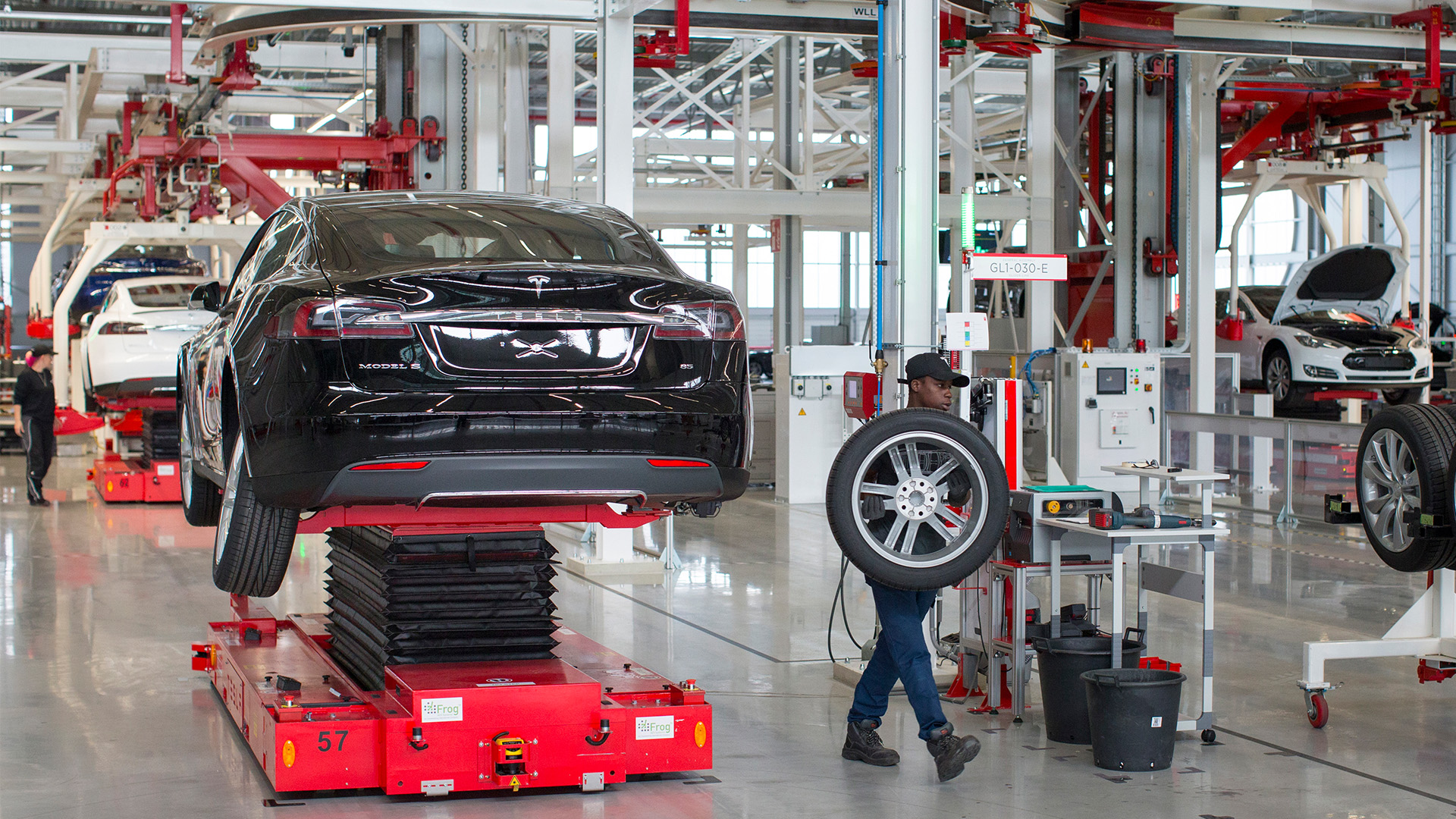

We may earn revenue from the products available on this page and participate in affiliate programs. Learn more ›
The Tesla 3 is envisioned to be Tesla’s entry into the mass-production electric car market. With little competition on the marketplace, Tesla is in production at a time where mass-production of EVs is in a fairly new state. As the industry matures, prices on electric cars will likely fall. In the interim, research firms have begun to dismantle current market EVs in order to assess costs and find opportunities for manufacturers to make profitable decisions.
In a recent report, UBS’s Global Automobiles assessed the cost of another EV on the market—the Chevy Bolt. Currently UBS believes that GM takes a net loss of $7,400 (after all expenses) on each Bolt. This is before all incentives and other government subsidized programs geared toward EVs. Assessing the components and manufacturing process of the Bolt led to the belief that Tesla would lose an estimated $2,800 per vehicle if sold at its target price point, before interest and taxes.
Tesla quotes its Model 3 pricing as “starting at only $35,000 before incentives,” however, newer research shows that this may result in a loss for each and every unit sold, unless Tesla is expecting its base model to be bland enough for consumers to buy more. Just like any other vehicle, the Tesla Model 3 will be equipped with optional features which can be ordered with the vehicle. In order for Tesla to break even on the vehicle, UBS believes that customer must purchase nearly $6,000 in additional options. This, of course, leaves no room to meet the 25% profit margin predicted by Elon Musk. In order for that figure to be accurate, an additional cost of $10,250 would need to be applied on top of the $41,000 price point, bringing the grand total to $51,250 for each Model 3. This is less than $17,000 from the base price of the Model S.
Elon Musk seems to take pride in improving efficiency and cutting costs. One of his main accomplishments with The Boring Company is to cut improve efficiency by cutting operating costs by “3 – 4 times“. This opens the possibility that the data predicted by UBS does factor in the possibility of the Bolt’s manufacturing costs being greater than what Tesla has put together for the Model 3. Additionally, Tesla may predict to increase earnings by other methods. Such might include royalties from services such as the Tesla Network, or possibly through the use of the Supercharger network and its associated fees.
With costs of electrified cars becoming more affordable, the market will need mass support to drive sales in order to become profitable. Without mass production or support from politics, it is unlikely that the costs of EVs will drop in the near future. Should manufacturing become cheaper, the profits will likely roll-over back into production to further improve costs before trickling down to the consumer. These types of cost analysis may help to prove case-in-point for the need to provide more financial support towards EVs to ensure their prosperity.
